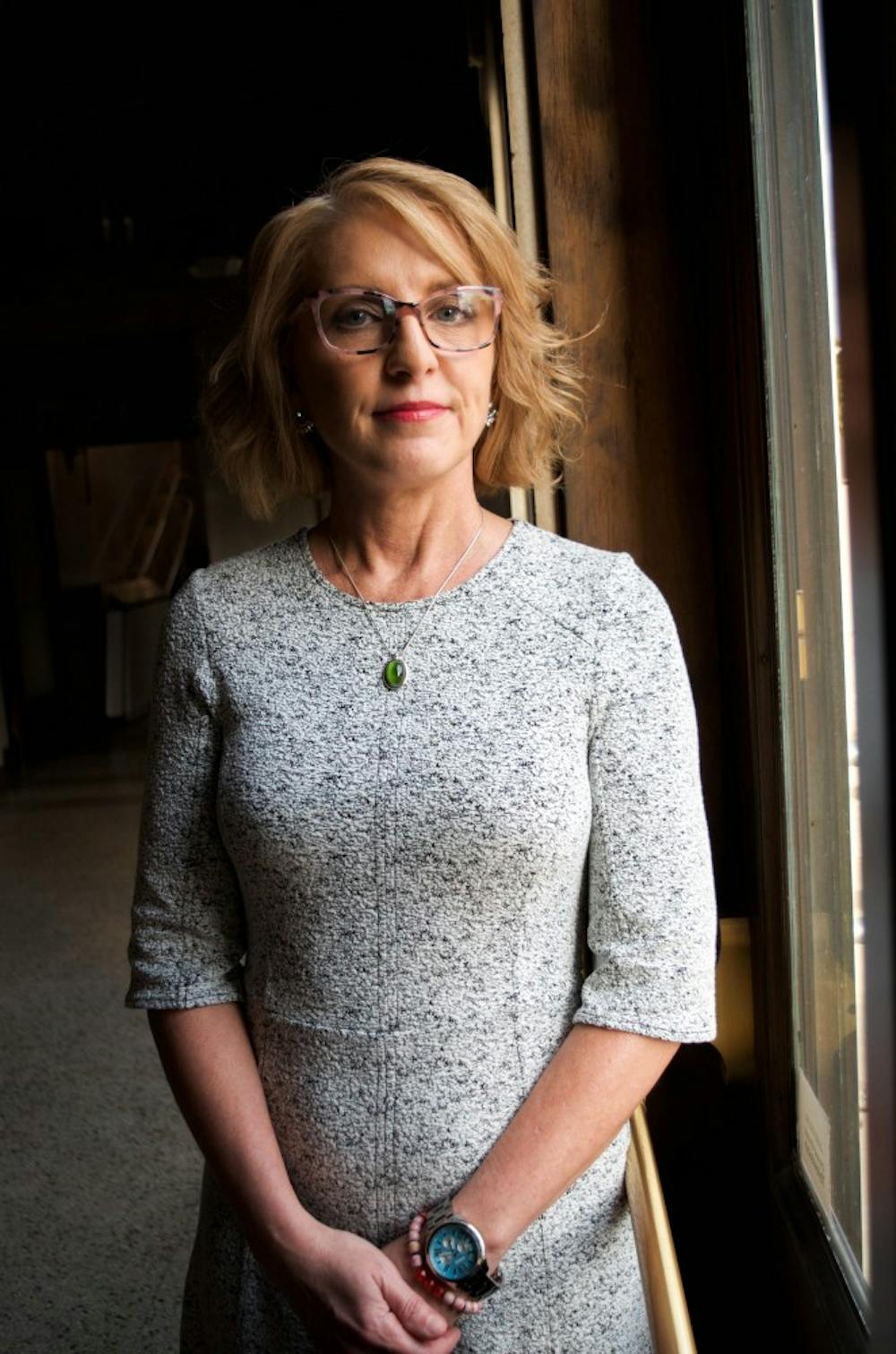Forgotten facts about Muncie:
1. Muncie used to have five factories devoted to making roller skates
2. One forgotten hero of Muncie was Patricia Bragg, an African American. In the past, Muncie Central classes have taken different trips, and in 1949 a group of French students went to a small cafe they regularly dined, where Bragg was refused service. She wrote to a Muncie paper standing up for herself, and several students wrote letters following hers.
3. The youngest pilot in Indiana in 1932 lived in Muncie
4. Muncie was the home of the first female photographer who was able to capture the IHSAA Boys' Basketball Championship
From old hunting grounds to lost female pilots, a lot of Muncie’s history has been forgotten over the decades.
With old maps, historic photographs, newspaper articles and diary entries, Melissa Gentry, map collections assistant at Bracken Library, worked to retell history during her presentation, “Forgotten Faces and Places in Muncie.”
Professor of composition Maria Staton said she went to the event because she was interested in the topic, but she left even more inspired than she came.
“Melissa has a lot of knowledge,” Staton said. “She is so personally interested in the information that she's talking about, that she [was] able to spark my interest.”
Even after growing up in Muncie and having a background in geography, Andy Shears, co-founder of Muncie Map Co., said he also was given a “different perspective” on the topic.
RELATED: Couple 'embraces local aspect' of business with new Muncie storefront
“I know a fair amount about local history…, but I also learned more,” Shears said. “[It was a] different perspective than I’m used to seeing because [the history was] definitely more focused on women, which is good because history of women in Muncie has been largely ignored.”
Shears also said the stories Gentry talked about showed the “deep roots” Muncie has.
“I think it's something in the later half of the twentieth century we got away from,” Shears said. “We deindustrialized; we tried to readjust that and just kind of lost our character.
“How am I going to learn about myself unless I learn about where I came from?”
This event was one of many focused on Muncie’s past at Cornerstone Center for the Arts.
Gentry said Cornerstone wants “to do [more] programs, classes and exhibits about some of the women that [are] a really big part of forgotten Muncie history” in celebration of the 100th anniversary of women’s suffrage.
“I just think it’s important because I think it does tell the story of the culture of the town. Like there were two opera houses here, and there was a huge art community here,” Gentry said. “A lot of people don’t realize that until they go back and look at the buildings... It's important to know Muncie had art, and Muncie had more than the Ball jars.”
Contact Alyssa Cooper with comments at acooper6@bsu.edu




